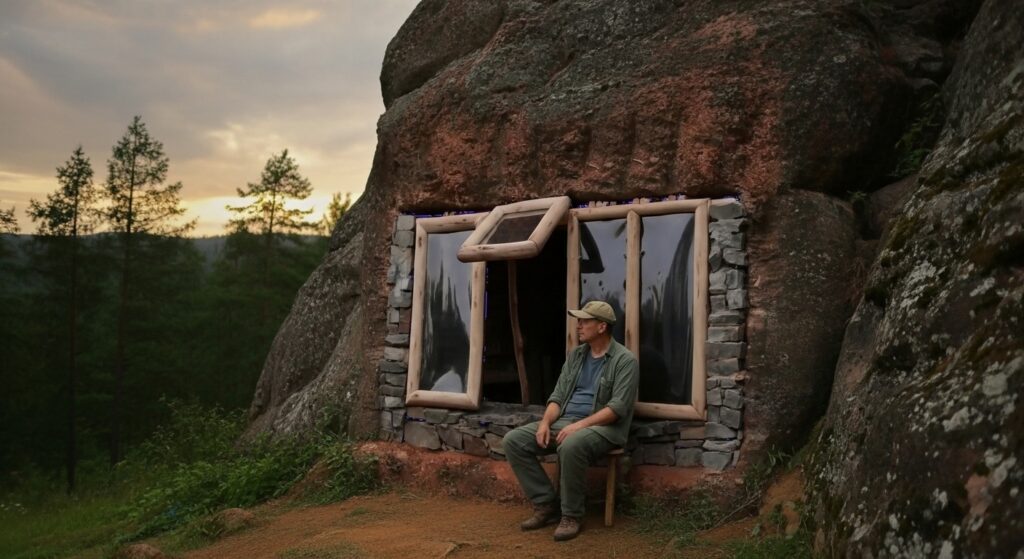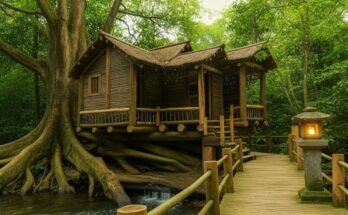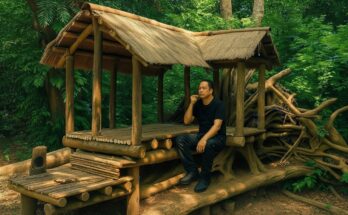
I embarked on a journey to build a hidden forest shelter, knowing it would take weeks of patience, skill, and connection with nature. The shelter needed to be more than just a simple refuge; it had to blend seamlessly into the forest, offering both protection and comfort deep in the wilderness.
Beginning with careful site selection, I chose a spot shielded by thick trees and natural cover, which would help hide the structure and buffer against wind and rain. I started digging and clearing the area, working slowly and deliberately to create a stable foundation beneath the forest canopy.
Using tools crafted by hand, I harvested wood, branches, and vines from the surrounding forest. Piece by piece, I built the frame, weaving and lashing materials with precision to ensure strength and durability. The shelter’s design focused on blending with the landscape—walls were covered with layers of leaves, bark, and moss for insulation, making the shelter warm and weatherproof.
Building over weeks allowed me to deeply engage with the forest rhythms, adapting to challenges such as weather changes and finding resources sustainably. Inside, I crafted a soft bedding area with pine needles and moss to keep warm and comfortable. A small firepit placed safely nearby provided warmth and light without risking the forest.
This forest shelter became a sanctuary—a place where patience and respect for nature created a durable home away from modern distractions. Each day of building was a lesson in humility and resilience. By the end, I had a hidden shelter that was more than a structure; it was a testament to what can be achieved when we immerse ourselves fully in the wild, embracing its challenges and beauty.I embarked on a journey to build a hidden forest shelter, knowing it would take weeks of patience, skill, and connection with nature. The shelter needed to be more than just a simple refuge; it had to blend seamlessly into the forest, offering both protection and comfort deep in the wilderness.
Beginning with careful site selection, I chose a spot shielded by thick trees and natural cover, which would help hide the structure and buffer against wind and rain. I started digging and clearing the area, working slowly and deliberately to create a stable foundation beneath the forest canopy.
Using tools crafted by hand, I harvested wood, branches, and vines from the surrounding forest. Piece by piece, I built the frame, weaving and lashing materials with precision to ensure strength and durability. The shelter’s design focused on blending with the landscape—walls were covered with layers of leaves, bark, and moss for insulation, making the shelter warm and weatherproof.
Building over weeks allowed me to deeply engage with the forest rhythms, adapting to challenges such as weather changes and finding resources sustainably. Inside, I crafted a soft bedding area with pine needles and moss to keep warm and comfortable. A small firepit placed safely nearby provided warmth and light without risking the forest.
This forest shelter became a sanctuary—a place where patience and respect for nature created a durable home away from modern distractions. Each day of building was a lesson in humility and resilience. By the end, I had a hidden shelter that was more than a structure; it was a testament to what can be achieved when we immerse ourselves fully in the wild, embracing its challenges and beauty.


